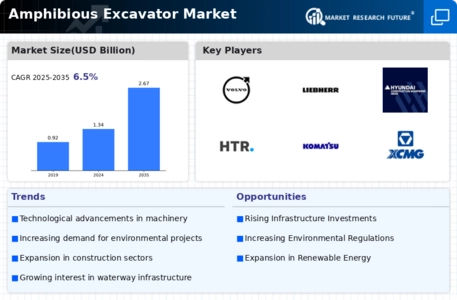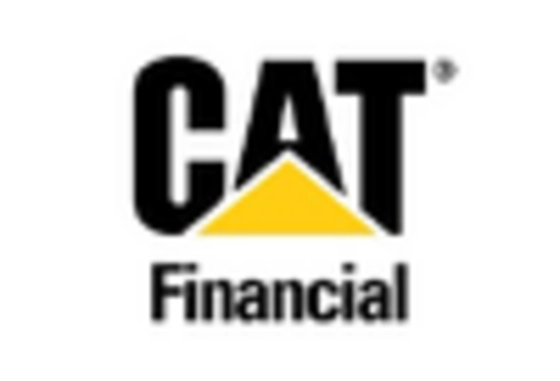Environmental Regulations
The Amphibious Excavator Market is experiencing a notable shift due to increasing environmental regulations. Governments are implementing stricter guidelines to protect wetlands and aquatic ecosystems, which necessitates the use of specialized equipment like amphibious excavators. These machines are designed to operate in sensitive environments without causing significant disruption. As a result, construction and excavation companies are increasingly investing in amphibious excavators to comply with these regulations. The market for amphibious excavators is projected to grow as more projects require adherence to environmental standards, thus driving demand for these versatile machines.
Technological Innovations
Technological advancements are significantly influencing the Amphibious Excavator Market. Innovations in hydraulic systems, GPS technology, and remote operation capabilities are enhancing the efficiency and effectiveness of amphibious excavators. These advancements allow for improved precision in excavation tasks, reducing operational costs and time. As companies seek to optimize their operations, the adoption of technologically advanced amphibious excavators is likely to increase. The market is poised for growth as manufacturers continue to invest in research and development, leading to the introduction of more sophisticated models that meet the evolving needs of the industry.
Expansion of Mining Activities
The expansion of mining activities is another significant driver for the Amphibious Excavator Market. As mineral extraction operations increasingly move into wetland areas, the need for specialized equipment becomes paramount. Amphibious excavators are uniquely equipped to handle the challenges posed by these environments, facilitating the extraction process while minimizing environmental impact. The mining sector's growth, particularly in regions rich in natural resources, is likely to boost the demand for amphibious excavators. This trend suggests a promising outlook for the market as mining companies seek efficient solutions for their operations.
Increased Focus on Flood Management
The Amphibious Excavator Market is also driven by the growing emphasis on flood management and mitigation strategies. As climate change leads to more frequent and severe flooding events, there is a heightened need for effective waterway management. Amphibious excavators are essential for dredging, channel clearing, and other flood control measures. Their ability to operate in both land and water environments makes them invaluable for such tasks. Consequently, the demand for amphibious excavators is expected to rise as municipalities and governments invest in infrastructure to combat flooding, thereby propelling market growth.
Rising Demand for Infrastructure Development
Infrastructure development remains a key driver for the Amphibious Excavator Market. With urbanization and population growth, there is a pressing need for improved transportation networks, water management systems, and public facilities. Amphibious excavators are particularly suited for projects in challenging terrains, such as marshlands and riverbanks, where traditional excavators may struggle. The market is expected to see a surge in demand as governments and private entities allocate substantial budgets for infrastructure projects. This trend indicates a robust growth trajectory for amphibious excavators, as they play a crucial role in executing these complex projects.


















Leave a Comment